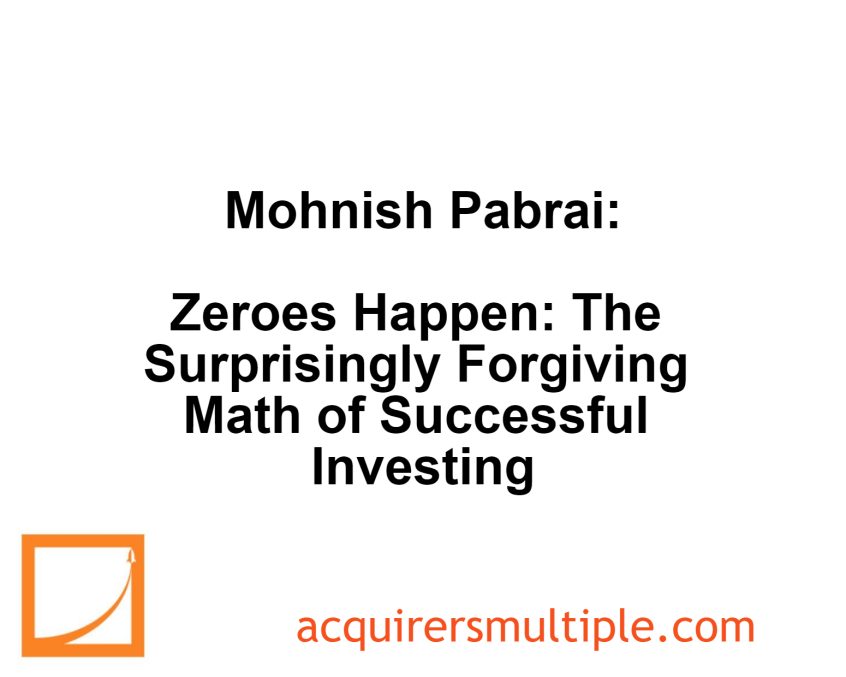In this Q&A session with Oxford University, Mohnish Pabrai discusses the forgiving nature of the investment business despite frequent mistakes. His key points include:
- High Error Rates: Even the best investors are wrong often
- Asymmetrical Rewards: One home run success can outweigh many smaller failures
- Acceptable Error Margin: Mistakes like stocks going to zero are expected and won’t ruin a diversified portfolio
- Portfolio Concentration: Don’t overconcentrate on individual stocks (10-8 is recommended)
- Circle of Competence: Focus on areas you understand and avoid venturing into unknown territory
Here’s an excerpt from the session:
Pabrai: I think it was John Templeton who said that, Sir John Templeton, who said that basically the very best investment analyst will be wrong one out of three times.
And more likely most of us will be wrong half the time. And so the investing business is an extremely forgiving business.
If you ran a 10 stock portfolio and you were wrong about half the stocks, which is probably what you should expect would happen, about half the stocks, what you expect is going to happen to those businesses.
We’re looking into the future, and when we’re looking into the future by definition that’s you know fraught with peril.
So what John Templeton defined as a mistake might be that the stock sidelines, the stock goes down, the stock goes to zero, the stock goes up 10% whether when you thought it would double, all of these things are mistakes.
But because of the asymmetry of the way the investing business works with risk and reward an investor could be extremely successful and do extremely well even if they were right one out of 10 times.
If that one time when they were right was just a massive home run, it would take care of all the mistakes.
And so I think that the way I look at it is that if I run a 10 stock portfolio and one of those 10 stocks happens to be Valeant, and I’ve had several zeros in my illustrious career.
And so the zeros are going to happen I mean I learned a few ways to try to reduce the zeros but the zeros will happen.
And so one stock goes to zero, you’re down 10% because of that, it’s not the end of the world.
And so even the investors I think who were long on Valeant I don’t know if they had really put more than 10% of assets into Valeant, I may be wrong on that, but they had had a huge run-up in the value of Valeant.
So like in in places like the Sequoia Fund it became maybe 30% of the pie and so on.
So you’re giving up gains, which is a little bit different than putting 30% up, so I wouldn’t sweat the fact that we are going to have mistakes.
I don’t think there’s any way to avoid them.
Even Buffett this year in his letter said that basically 12 decisions over 58 years created Berkshire as we know it, and he would have made hundreds of decisions.
So even his hit rate of the great ones was like something like less than 4%.
And so I don’t think we need to be too concerned. I think what we need to do is focus on a circle of competence, stay as close to the center as possible, don’t wander to the edges, and definitely don’t wander off beyond the edges.
And don’t overly concentrate. I think 10 stocks, 8 stocks is perfectly fine, 3 stocks may not be so fine, and I think you’ll be fine.
You can watch the entire discussion here:
For all the latest news and podcasts, join our free newsletter here.
Don’t forget to check out our FREE Large Cap 1000 – Stock Screener, here at The Acquirer’s Multiple:



